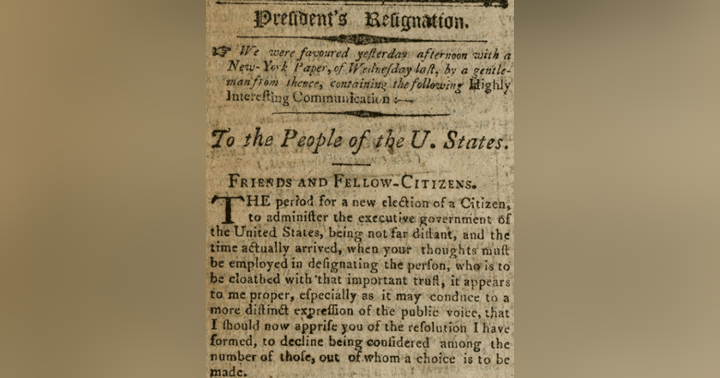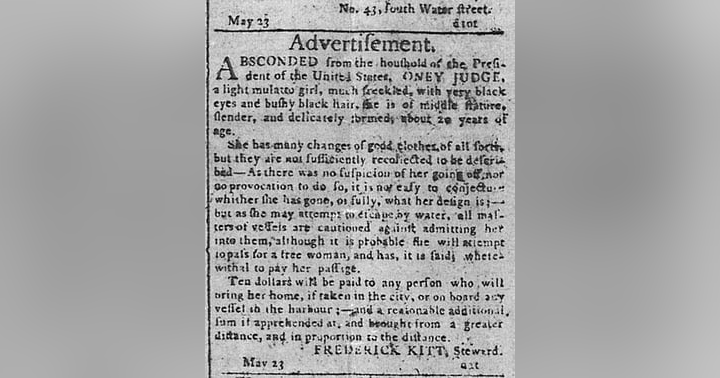Washington's Native American Policy

Check out Mount Vernon’s free online resources about Washington’s Native American policy and the formation of the Cabinet. For a full bibliography of the episode, including primary sources and scholarship, check out our Episode 3 show notes.
And remember to subscribe to Inventing the Presidency on your favorite podcast app!
Media and Interactives
Ask Mount Vernon: How did George Washington Get Along with Native Americans
The Digital Encyclopedia of George Washington: The Proclamation Line of 1763
The Proclamation Line of 1763 was a British-produced boundary marked in the Appalachian Mountains at the Eastern Continental Divide. Decreed on October 7, 1763, the Proclamation Line prohibited Anglo-American colonists from settling on lands acquired from the French following the French and Indian War.
Lesson Plans
This activity explores two accounts of a meeting between the Iroquois Nation and the French before the French and Indian War. Students will analyze the sources of the two accounts and evaluate how truthful or biased they are to reconstruct what actually happened during that meeting. Students will consequently learn the difficulties historians have in interpreting history and increase their media literacy skills.
Seven Years’ War Primary Source Set
Mount Vernon’s Primary Source Sets contain documents, maps, objects, and images all related to a given theme. Each primary source includes a brief background for students and supporting content for instruction. Use these sets as a whole collection, in small groups or pairs, or individually depending on classroom needs.
President Washington’s Native American Policy
This lesson takes students through President George Washington’s first years as President as he and Secretary of War Henry Knox craft the first president’s Native American Policy. Students are asked to critically analyze President Washington’s policies and the tangible symbols of those policies.
U.S. Policy with Indian Nations
How did the United States government develop policies towards Indian nations during George Washington’s presidency? How were Indian societies and cultures affected by U.S. policies? This integrated lesson explores how the United States government, American citizens and Indian nations asserted rights to their lands during Washington’s presidency. Students will study the changing landscape of our nation and who benefited from and was harmed by these changes.
Let your students take a look at the leadership qualities of George Washington and the establishment of the first cabinet. By sorting and categorizing primary source excerpts in group-generated categories, students are offered an opportunity to associate character, virtues, and values with traits of good citizens and leaders today.
Primary Sources
[MAP] Action between Genl. St Clairs army & that of the American Indians Novr. 4th 1791
A manuscript map depicting the battle and defeat.
George Washington to Dinwiddie, 1754
This letter is an early example of Native American policies. Washington wrote this letter to Lieutenant-Governor Dinwiddie as he prepared for his first military appointment, an expedition with 160 soldiers to the forks of the Allegheny, Ohio, and Monongahela Rivers. He requested supplies and uniforms, clarified the pay for troops, and offered his personal observations of Native Americans.
At the Battle of the Monongahela on July 9, 1755, every officer on Major General Edward Braddock's staff was injured or killed, with the exception of his aide-de-camp, George Washington. Braddock also sustained a fatal wound and is said to have been carried from the field in this, his officer's sash. Washington alone brought order to the fray, forming a rear guard to enable retreat. Family tradition maintains that Braddock presented the sash to Washington prior to his death four days later. In 1846, the sash was presented to another war hero and future President of the United States, Zachary Taylor.
Letter: Philadelphia, to George Clinton, 1 December 1790
This letter discusses Gov. Clinton's letter of 26th containing news from Capt. Brant of General Harmar's expedition against the Northwest Confederacy and the resulting ambush.
Letter: George Clendinen to George Washington, 1792 November 11
Clendinen introduces, to Washington, King Dequen, leader of the Kascashas, and expresses the chief's intent to prevail "upon the Chiefs of Many [Indian] Nations to Travel with him to you,... Hoping that we may all become the Same people. Firmly United to Each Others Interests."











